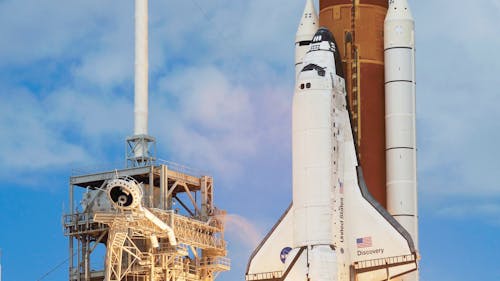Spaceflight is real, hyperdrives not possible

From the Millennium Falcon to the U.S.S. Enterprise, science-fiction often displays spacecrafts traveling faster than light using “hyperdrives” and other exotic propulsion systems.
While some ideas from science fiction have become reality, warp drives and other forms of faster-than-light travel remain impossible, according to a National Air and Space Administration (NASA) article.
“The bulk of scientific knowledge concludes that it’s impossible, especially when considering Einstein’s Theory of Relativity,” according to the article.
Most rockets today are fueled by liquid hydrogen, a powerful fuel source that does not weigh much, according to NASA.
“Hydrogen has the lowest molecular weight of any known substance and burns with extreme intensity,” according to NASA. “In combination with an oxidizer such as liquid oxygen, liquid hydrogen yields the highest specific impulse, or efficiency in relation to the amount of propellant consumed, of any known rocket propellant.”
Both of these elements are difficult to store as liquids, according to NASA. They must be kept at extremely low temperatures — minus 253 degrees Celsius for hydrogen and minus 183 for oxygen.
Liquid hydrogen can expand quickly when exposed to any heat, and must be vented to prevent the pressure inside a rocket from increasing enough to create a hole in the vessel.
Today these two liquids are the main propellants used by NASA and various other companies for spacecraft, according to the former’s website.
Solid propellants are also used by some organizations to launch spacecraft, according to a Scientific American article. Their increased density means they can produce more thrust when carrying the same volume as a liquid fuel source.
While they are easier to store and require less complicated systems to use, they also cannot be shut off once lit, according to the article.
Though these traditional fuels are adequate to bring people to the International Space Station, but they are not sufficient to take humans further. NASA and other researchers have been analyzing the possibilities of nuclear propellants since the 1940s, according to gizmodo.com.
Some nuclear reactors are already used to power spacecraft, according to the European Space Agency (ESA). They are not yet used widely to propel spacecraft, although various designs have been proposed.
One of them, the Orion Drive, suggests dropping surplus nuclear explosives out of the back of a rocket and letting the explosions move the rocket forward, according to the ESA.
More practical designs will likely utilize strong shielding and a sealed reactor to protect human lives from nuclear radiation.
“Any nuclear power plant that is to considered for future spacecraft will have to be … so heavily armored that it would be undamaged by either re-entry into the Earth's atmosphere or the accidental detonation of the entire launch vehicle,” according to the ESA. “Humanity may be infinitely inventive, but we also have a strong sense of self preservation.”



